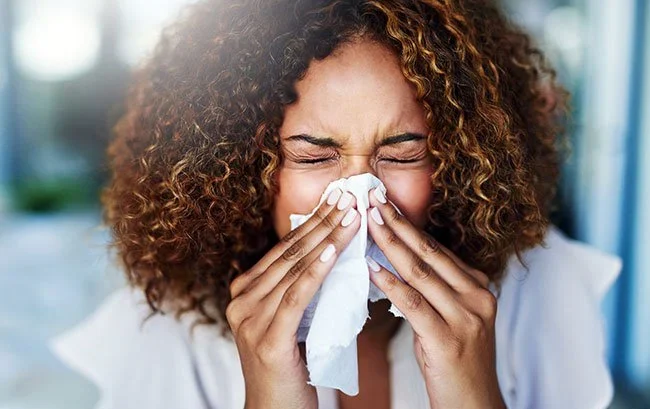Spring Allergies Are Here: What You Can Do
If you think your allergies have been getting worse over the last few years, you’re not imagining it.
According to a new study released last month, global warming has already made allergy season longer and pollen counts higher. And they’re projected to get worse over the next few decades, because warmer weather keeps pollen producers blooming longer.
Our concierge primary care doctors have already seen this with a number of our patients whose symptoms start earlier and are getting harder to treat. But there are steps you can take to help reduce the misery.
The latest findings
The new study, published in the journal Nature Communications, found that pollen levels could as much as triple in some places, as warmer weather increases the growing season. In addition, researchers found that burning fossil fuels such as gasoline, coal, and natural gas releases more carbon dioxide, which prompts plants to produce more pollen.
“Overall, this is an incredibly important study,” University of Utah biologist and climate scientist Bill Anderegg, who was not involved in the study, told The Washington Post.
“It tells us that the historical trends of longer and more severe pollen seasons are likely to continue, driven by climate change, and this will absolutely have substantial health consequences in allergies and asthma for Americans,” he said.
Another study, published last year in the journal Proceedings of the National Academy of Sciences (PNAS), found that between 1990 and 2018, pollen season had lengthened by 20 days and pollen concentrations increased 21 percent over that time period.
All about pollen
Pollen is the yellow powdery microspore produced by the male part of a flower (anther) used to fertilize the female part (stigma). It travels mainly by wind, but can also be carried by insects or birds. It can enter your home through open doors or windows, as well as on your clothing, hair, and shoes.
Pollen is one of the most common allergen triggers in the U.S., affecting about 25 million people. About 40 percent of American children are believed to suffer from pollen-induced allergies.
Because the grains are so fine, they travel easily and are easily inhaled. Then the body’s immune system goes into overdrive, producing an outpouring of histamine to counteract the invader. The result, known as hay fever or allergic rhinitis, produces a host of uncomfortable symptoms, including:
- sneezing
- nasal congestion
- runny nose
- itchy, watery eyes
- sinus pressure, leading to facial pain
- scratchy throat
- cough
- decreased sense of taste or smell
- swollen, blue-tinged skin beneath the eyes
Pollen allergies differ
There are many types of pollen, including those from trees, grasses, weeds, and flowers, and individuals can react differently to each of them. That’s why the pollen counts announced on weather reports don’t necessarily reflect how your body’s immune system will behave. It all depends on your particular allergy.
The top pollens affecting Jupiter at the moment are mainly grasses. Our pollen count in recent weeks has ranged between moderate and high levels.
Symptoms are not serious unless they trigger an asthma attack in those with the disease, according to Yale Medicine allergist Florence Ida Hsu, MD. But they can make life miserable, and even cause people to miss work and school as a result.
“There is a theory called the ‘unified airway’ in which the nose is connected to the lungs, so if you have a lot of inflammation in the nasal passages and the sinuses, that can then lead to lower respiratory symptoms such as cough, shortness of breath, and wheezing as well,” she told Yale Medicine.
“You’ll find people with allergies getting recurrent sinus infections, and both can lead to respiratory symptoms, asthma, and bronchitis,” she added.
Treatments vary
Depending on the severity of your symptoms, there are several ways to treat allergies.
Over-the-counter (OTC) remedies include:
- nasal sprays
- oral antihistamines
- decongestants
- combination oral antihistamines and decongestants
- nasal irrigation, with an OTC saline spray or a neti pot
Medical treatments include:
- medications to block allergic reactions
- medications to ease symptoms
- skin tests to determine which pollen triggers an allergy
- allergy shots
How to protect yourself
Of course, the best advice is to avoid exposing yourself as much as possible to pollen. Here are a few ways to do that.
- Stay indoors if you can on dry, windy days.
- Avoid outdoor activity in the early morning when pollen counts are highest.
- Wear a hat and sunglasses to avoid getting pollen in your hair and in your eyes.
- Change clothing, leave your shoes outside, and shower after spending time outdoors, especially before going to bed to avoid getting pollen on bedclothes.
- Keep windows closed, in the home and car.
- Don’t line-dry clothing or bedding.
- Wear a mask if you need to work outdoors. The N95 and KN95 masks you’ve been wearing for the coronavirus can also filter out pollen particles.
- Use a vacuum equipped with a HEPA filter.
- Use a portable air cleaner with a HEPA filter in your bedroom.
And if you know you’re allergic to a particular type of pollen, or that you begin having symptoms at a particular time of year, start taking your allergy medications before symptoms begin. If none of this helps, let us know so we can explore other options.

